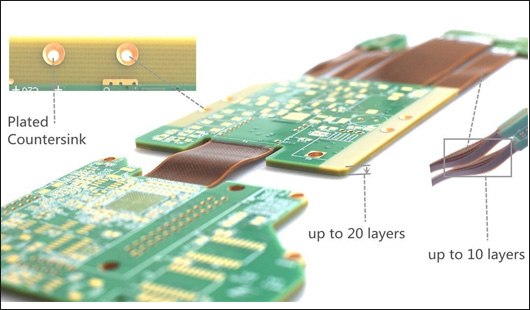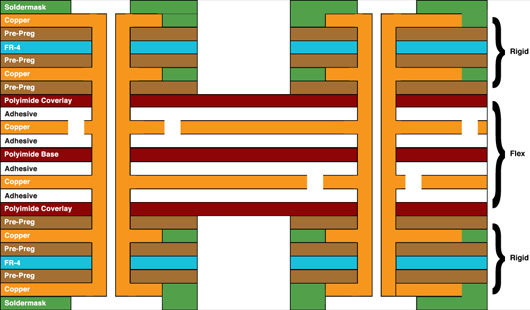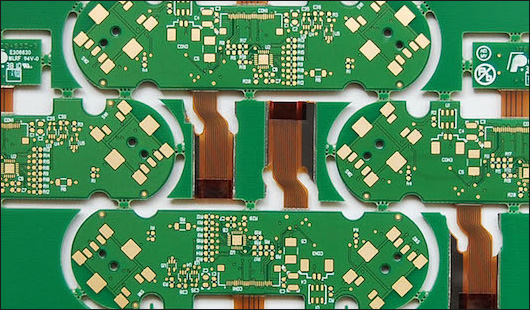As the name implies, rigid-flex printed circuit boards(PCBs) are the composite boards of rigid boards and flexible boards. Most rigid-flex circuits are multi-layered. A rigid-flex PCB can include one/several flex boards and rigid boards, which are connected through internally/externally plated-through holes.

What are the advantages of the rigid-flex PCBs?
One of the critical characteristics of rigid-flex PCBs is the slim profile and variable shapes, making them ideal solutions for ultra-thin and ultra-light packages. Although the rigid-flex boards may be more expensive in designing and manufacturing, they do have lots of advantages that can solve many problems in traditional hardboard technologies.

1. Compact size and flexible shape
Rigid-flex PCBs are easier to install more components in a smaller space because they can change the shapes according to specific outlines. This technology will reduce the size and weight of the final products and overall system costs. At the same time, the compact profile of rigid-flex PCB makes it the best choice for fine line and high-density circuits in HDI technologies.
2. Customization available for different applications
Rigid-flex PCBs are freedom in packaging geometry and can be tailored for applications in many industries such as aerospace, military, medical equipment, and consumer electrics. They are available to customize the size and shape to fit the housing designs and 3D designs, which provides designers more possibilities to meet different requirements in specific applications.
3. Better mechanical stability
The stability of rigid boards and the flexibility of flexible boards form a stable structure of the entire packages while retaining the reliability of the electrical connection and flexibility needed for installation in small spaces.

4. Better performance under harsh environments
Rigid-flex PCBs have high-shock and high-vibration resistance so that they can work well in high-stress environments. And fewer cables and connectors are used in rigid-flex PCBs, which also reduces safety risks and maintenance in future use.
5. Easy to be fabricated and tested
Rigid-flex PCBs require less number of interconnectors and related components/parts. It helps to simplify the assembly operations, making the rigid-flex PCBs are easier to be assembled and tested. Rigid-flex PCBs are very suitable for PCB Prototypes.
Besides the benefits mentioned above, other common advantages of rigid-flex PCBs include high circuit density, excellent thermal dissipation and chemical resistance, etc. All in all, rigid-flex PCBs combine all the benefits of hard PCB and flexible PCB while complementing the disadvantages. This kind of PCBs is an optimal solution to design reliable and robust circuits for smart wearable devices and other industries. PCBGOGO has a strict quality control system to ensure the rigid-flex boards manufactured and assembled correctly with high-quality standards. If you need more details like quotation or order, contact us via service@pcbgogo.com now.
Get Rigid-flex PCBs Fabrication

